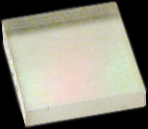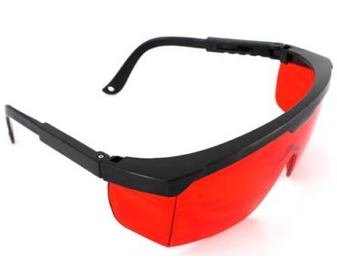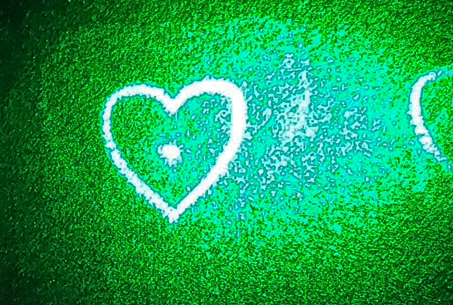Laser Protection Glasses
$39.99

Overview 
If your eyes are not protected adequately when working with laser beams, severe damage may occur. The correct choice of lens density and color is based on the wavelength and power of the specific laser being used. In general, laser eye protection should be selected on the basis of how well it will protect the eye against the maximum exposure anticipated. At the same time, the greatest amount of light possible should be allowed to enter the eye to ensure proper sight.
The unprotected human eye is extremely sensitive to laser radiation and can be permanently damaged from direct or reflected beams. The area of ocular damage for any given laser depends upon its output wavelength. Laser light, including greenlaserpointerstore.com's green laser pointer in the visible and near infrared spectrum 400 - 1400 nm contributes to the so-called "retinal hazard region" and can cause damage to the retina in your eye, while wavelengths outside this region (ultraviolet and far infrared spectrum) are absorbed by the anterior segment of the eye causing damage to the cornea and/or to the lens. The extent of ocular damage is determined by the laser irradiance, exposure duration, and beam size. As laser retinal burns may be painless and the damaging beam sometimes invisible, maximal care should be taken to provide protection for all persons in the laser suite including the patient, laser operator, assistants, and observers.
Protective eyewear in the form of goggle, glasses, and shields provides the principal means to ensure against ocular injury, and must be worn at all times during laser operation. Laser safety eyewear is designed to reduce the amount of incident light of specific wavelength(s) to safe levels, while transmitting sufficient light for good vision.
Hazards
The area of damage depends on the wavelength of the incident or reflected laser beam:
• Laser light in the visible to near infrared spectrum
(400 - 1400 nm) can cause damage to the retina resulting in scotoma (blind spot in the fovea). This wave band is also know as the "retinal hazard region".
• Laser light in the ultraviolet (290 - 400 nm) or far infrared (1400 - 10,600 nm) spectrum can cause damage to the cornea and/or to the lens.
|
|
Laser Diffraction Lens Spots
$9.99

Overview 

You can instantly turn your laser pointer into a laser light show! In laser optics a diffraction grating is an optical component with a regular pattern, which splits and diffracts light into multiple beams that travel in different directions. The directions of these beams depend on the spacing of the grating and the wavelength of the light (color) so that the grating acts as the dispersive element.
For practical applications, gratings generally have grooves or rulings on their surface rather than dark lines. Such gratings can be either transparent or reflective. Gratings which modulate the phase rather than the amplitude of the incident light are also produced, frequently using holography. Transform your laser pointer into a multiple point laser display with a diffraction laser lens from greenlaserpointerstore.com.
History 
The principles of diffraction gratings were discovered by James Gregory, about a year after Newton's prism experiments, initially with artifacts such as bird feathers.
The first man-made diffraction grating was made around 1785 by Philadelphia inventor David Rittenhouse, who strung hairs between two finely threaded screws. This was similar to notable German physicist Joseph von Fraunhofer's wire diffraction grating in 1821.
|
|
Laser Diffraction Lens Heart
$9.99

Overview 

You can instantly turn your laser pointer into a laser light show! In laser optics a diffraction grating is an optical component with a regular pattern. In this case the pattern is of hearts.
For practical applications, gratings generally have grooves or rulings on their surface rather than dark lines. Such gratings can be either transparent or reflective. Gratings which modulate the phase rather than the amplitude of the incident light are also produced, frequently using holography. Transform your laser pointer into a multiple point laser display with a diffraction laser lens from greenlaserpointerstore.com.
History 
The principles of diffraction gratings were discovered by James Gregory, about a year after Newton's prism experiments, initially with artifacts such as bird feathers.
The first man-made diffraction grating was made around 1785 by Philadelphia inventor David Rittenhouse, who strung hairs between two finely threaded screws. This was similar to notable German physicist Joseph von Fraunhofer's wire diffraction grating in 1821.
|
|









